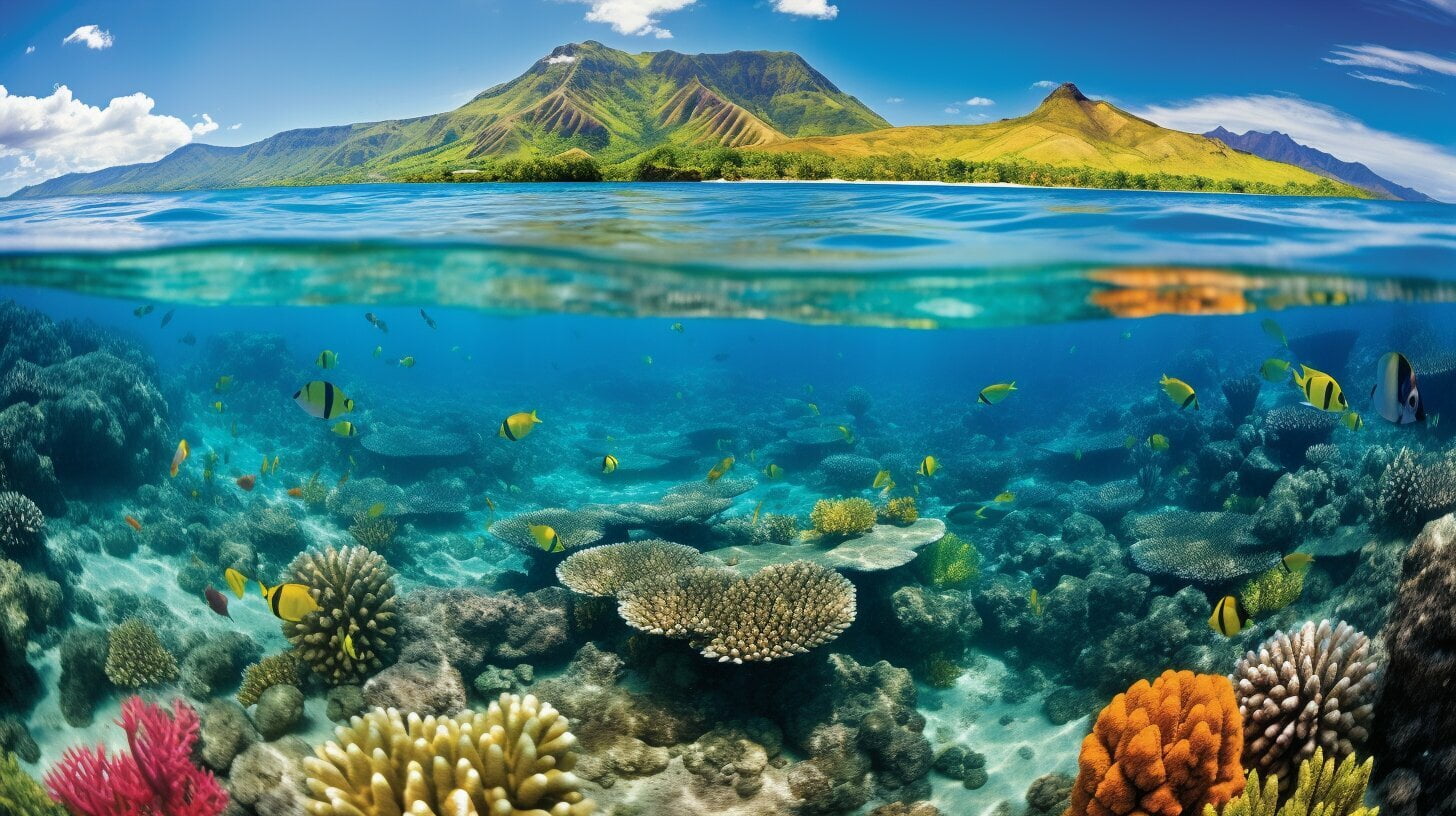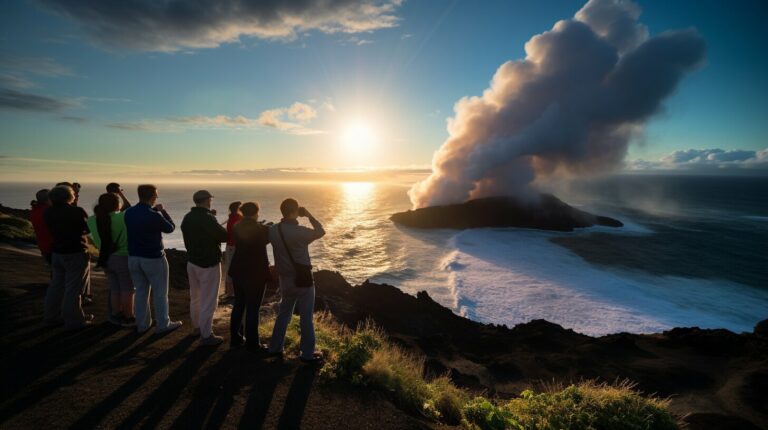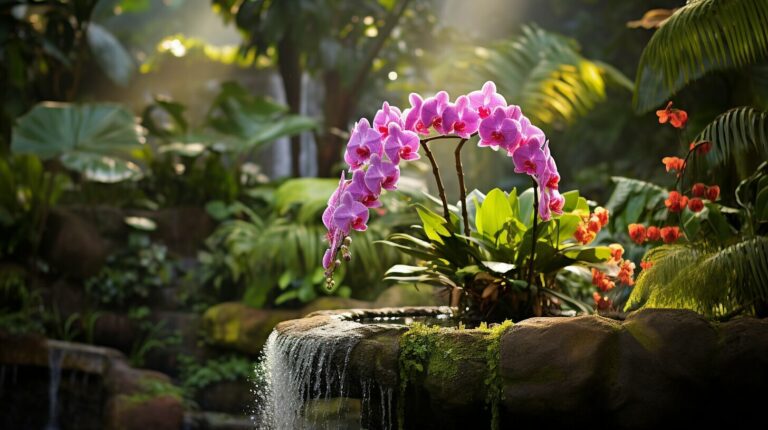🌊 Paradise Preserved: Marine Conservation Efforts in Hawaii 🐢
Hawaii’s marine conservation programs are dedicated to preserving the ocean’s stunning biodiversity and ensuring the long-term sustainability of its marine ecosystems. With its unique and fragile marine environment, Hawaii is a hotspot for marine conservation efforts, attracting organizations and initiatives that work tirelessly to protect the diverse range of species and habitats found in its waters.
Key Takeaways:
- Hawaii’s marine conservation programs are focused on preserving the ocean’s biodiversity and ensuring the sustainability of marine ecosystems.
- Conservation efforts in Hawaii are aimed at protecting vulnerable species and habitats.
- Marine conservation organizations play a crucial role in removing fishing nets and plastics from Hawaii’s waters.
- Efforts are also made to protect endangered species such as Hawaiian monk seals and green sea turtles.
- Individuals can support marine conservation in Hawaii by getting involved in conservation organizations and initiatives.
The Northwestern Hawaiian Islands: A Remote Paradise for Marine Conservation
The Northwestern Hawaiian Islands, a chain of remote islands and atolls located hundreds of miles from human populations, serve as a prime location for marine ecosystem protection and the implementation of sustainable fishing practices. These pristine and untouched islands, part of the newly designated Northwest Hawaiian Islands Marine National Monument, provide a unique opportunity for marine biologists and conservationists to study and preserve some of the most biodiverse and ecologically significant areas in the world.
“The creation of this gigantic new reserve is a very, very big deal,” says marine ecologist Jane Lubchenco of Oregon State University.
The waters surrounding these islands are home to an estimated 7,000 species, many of which are found nowhere else. The monument is a critical habitat for the endangered Hawaiian monk seal, with approximately 1,400 individuals calling these waters home. Additionally, it boasts the healthiest large coral reefs on Earth and is home to 70% of U.S. coral reef habitats. The unique biodiversity found in this region provides scientists with valuable insights into the state of the Pacific Ocean before human impacts.
To protect these invaluable ecosystems, the Northwest Hawaiian Islands Marine National Monument has implemented strict regulations. Commercial and recreational fishing have been completely phased out, and other activities that may harm or harass the marine life are also banned. Only researchers and individuals conducting sustenance angling for survival during extended stays at sea are permitted to fish within the monument.
The creation of the monument and the implementation of sustainable fishing practices ensure the long-term preservation of the Northwestern Hawaiian Islands’ marine biodiversity. It serves as a powerful statement that large areas of the ocean can be protected and conserved for the benefit of current and future generations.
Removing Fishing Nets and Plastics: A Critical Marine Conservation Effort
Marine conservation organizations in Hawaii are actively engaged in removing lost or abandoned fishing nets and plastics from the ocean, playing a critical role in preserving marine life and protecting the delicate balance of the marine ecosystem. These efforts are focused on the remote Northwestern Hawaiian Islands, a pristine area of ecological significance.
Stretching 1,200 miles northwest of the main Hawaiian Islands, the Northwestern Hawaiian Islands are home to a stunning array of coral reefs and uninhabited shorelines. However, these remote islands are also centrally located in the North Pacific Gyre, where currents gather marine debris from around the Pacific Ocean. To combat this issue, marine debris teams from NOAA’s marine debris program travel from island to island, carefully removing derelict “ghost” fishing gear from underwater reefs and collecting plastic debris from shorelines.
The removal of fishing nets and plastics is not an easy task, but the dedicated team is committed to protecting the marine ecosystem. They have removed over 160,000 pounds of fishing nets and plastics from the Northwestern Hawaiian Islands, mitigating the damage caused to coral reefs and reducing the threat to endangered species like Hawaiian monk seals and green sea turtles. The nets and plastics they remove not only damage corals but also pose a serious entanglement hazard to marine life.
| Marine Conservation Efforts: | Removing lost or abandoned fishing nets and plastics |
|---|---|
| Impact: | Preservation of marine life and protection of the marine ecosystem |
| Location: | Northwestern Hawaiian Islands |
| Accomplishments: | Over 160,000 pounds of fishing nets and plastics removed |
The removal of fishing nets and plastics is just one component of the broader marine conservation efforts in Hawaii. By actively engaging in these initiatives, individuals and organizations can contribute to the preservation of marine life, the protection of the ocean’s biodiversity, and the sustainability of our planet’s fragile ecosystems.
Protecting Endangered Species: Hawaiian Monk Seals and Green Sea Turtles
Marine conservation programs in Hawaii are dedicated to protecting endangered species such as Hawaiian monk seals and green sea turtles, ensuring their survival and contributing to the overall biodiversity of the marine ecosystem.
The Northwestern Hawaiian Islands, a remote and ecologically significant area, serve as a sanctuary for these endangered species. As part of marine conservation efforts, organizations have focused on removing lost or abandoned fishing nets and plastics from these waters. This initiative helps to preserve marine life and prevent further damage to the ocean.
| Efforts to Protect Endangered Species: | Impact on Marine Biodiversity |
|---|---|
| Removing lost or abandoned fishing nets and plastics | Preservation of marine life and prevention of damage to the ocean |
| Conservation initiatives specific to Hawaiian monk seals and green sea turtles | Protection of endangered species and their habitats |
The marine debris team, a key player in marine conservation, has successfully removed over 160,000 pounds of fishing nets and plastics from the Northwestern Hawaiian Islands. These efforts have helped protect the sensitive marine ecosystem and reduce the threat to endangered species, such as the Hawaiian monk seals and green sea turtles.
By engaging in conservation initiatives and supporting marine conservation organizations in Hawaii, individuals can contribute to the protection of these endangered species and the overall marine biodiversity in the region.
Getting Involved: How You Can Support Marine Conservation in Hawaii
You can play a part in marine conservation in Hawaii by supporting local marine conservation organizations and taking part in conservation initiatives aimed at preserving the ocean’s beauty and biodiversity. Hawaii is home to several marine conservation organizations that work tirelessly to protect and preserve the marine ecosystem. By supporting these organizations, you can contribute to their ongoing efforts and make a positive impact on the environment.
Marine Conservation Organizations
There are several marine conservation organizations in Hawaii that focus on various aspects of marine conservation, including marine biodiversity, ecosystem protection, and sustainable fishing practices. Some notable organizations include:
- Lawaiʻa ʻOhana: This organization works to promote sustainable fishing practices and supports community-based fisheries management in Hawaii.
- Kanaloa Hawaiʻi Foundation: This organization focuses on marine education and conservation, with programs aimed at protecting marine ecosystems and promoting stewardship.
- Malama Maunalua: This organization is dedicated to the restoration and preservation of Maunalua Bay, a critical marine habitat in Hawaii. They engage the community in conservation efforts through volunteer programs and educational initiatives.
Conservation Initiatives
In addition to supporting marine conservation organizations, you can also participate in conservation initiatives that aim to protect and preserve Hawaii’s marine environment. These initiatives include:
- Beach cleanups: Joining beach cleanup events organized by local organizations is a great way to contribute to marine conservation. By removing litter and debris from beaches, you can help prevent them from entering the ocean and causing harm to marine life.
- Volunteer programs: Many marine conservation organizations offer volunteer programs where individuals can actively participate in conservation efforts, such as reef restoration projects or sea turtle monitoring.
Conclusion
Marine conservation in Hawaii relies on the collective efforts of individuals, organizations, and communities. By supporting marine conservation organizations and participating in conservation initiatives, you can make a difference in protecting the marine biodiversity and preserving the beauty of Hawaii’s oceans. Together, we can ensure a sustainable future for Hawaii’s marine environment.
| Marine Conservation Organizations |
|---|
| Lawaiʻa ʻOhana |
| Kanaloa Hawaiʻi Foundation |
| Malama Maunalua |
Conclusion
Marine conservation programs in Hawaii are playing a vital role in protecting the ocean’s stunning biodiversity and ensuring the long-term sustainability of its marine ecosystems. By taking action and supporting these efforts, we can all contribute to the preservation of paradise.
The Northwestern Hawaiian Islands, with their remote and ecologically significant marine ecosystem, are at the forefront of conservation initiatives. These initiatives focus on sustainable fishing practices and the protection of the marine environment.
One major aspect of marine conservation in Hawaii is the removal of lost or abandoned fishing nets and plastics from the waters. These efforts are critical in preserving marine life and preventing further damage to the ocean.
Specific marine conservation programs in Hawaii also aim to protect endangered species such as Hawaiian monk seals and green sea turtles. These efforts are essential in preserving the rich biodiversity of Hawaii’s marine environment.
If you’re interested in getting involved in marine conservation in Hawaii, there are various ways to support these efforts. You can join conservation organizations, participate in conservation initiatives, and help spread awareness about the importance of preserving the ocean’s biodiversity.
By working together, we can protect the paradise that is Hawaii’s marine environment and ensure its beauty and richness for future generations to enjoy.
FAQ
Q: What is marine conservation?
A: Marine conservation refers to the protection and preservation of marine ecosystems and species to ensure their survival and promote sustainable use of marine resources.
Q: Why is marine conservation important in Hawaii?
A: Hawaii is home to diverse marine life and unique ecosystems. Marine conservation is crucial in Hawaii to protect this biodiversity, preserve the health of the ocean, and sustain the livelihoods of local communities.
Q: What are some marine conservation initiatives in Hawaii?
A: Marine conservation initiatives in Hawaii include removing fishing nets and plastics from the ocean, protecting endangered species like Hawaiian monk seals and green sea turtles, implementing sustainable fishing practices, and raising awareness about the importance of marine conservation.
Q: How can I support marine conservation in Hawaii?
A: You can support marine conservation in Hawaii by volunteering with local conservation organizations, participating in beach clean-ups and conservation projects, reducing your use of single-use plastics, and spreading awareness about the importance of marine conservation.
Q: What are the benefits of marine conservation in Hawaii?
A: Marine conservation in Hawaii ensures the long-term sustainability of marine resources, helps protect endangered species and habitats, promotes ecosystem health, supports tourism and recreational activities, and contributes to the overall well-being of the local communities.







